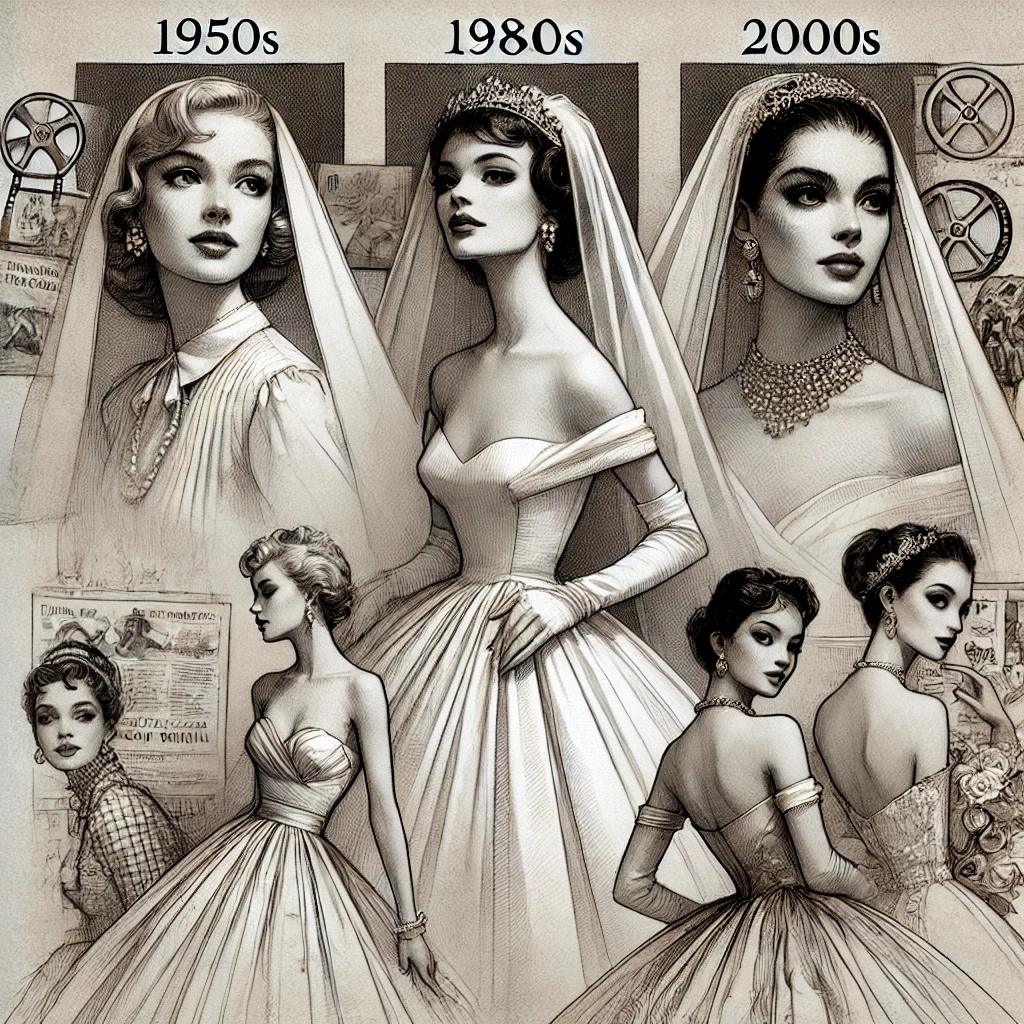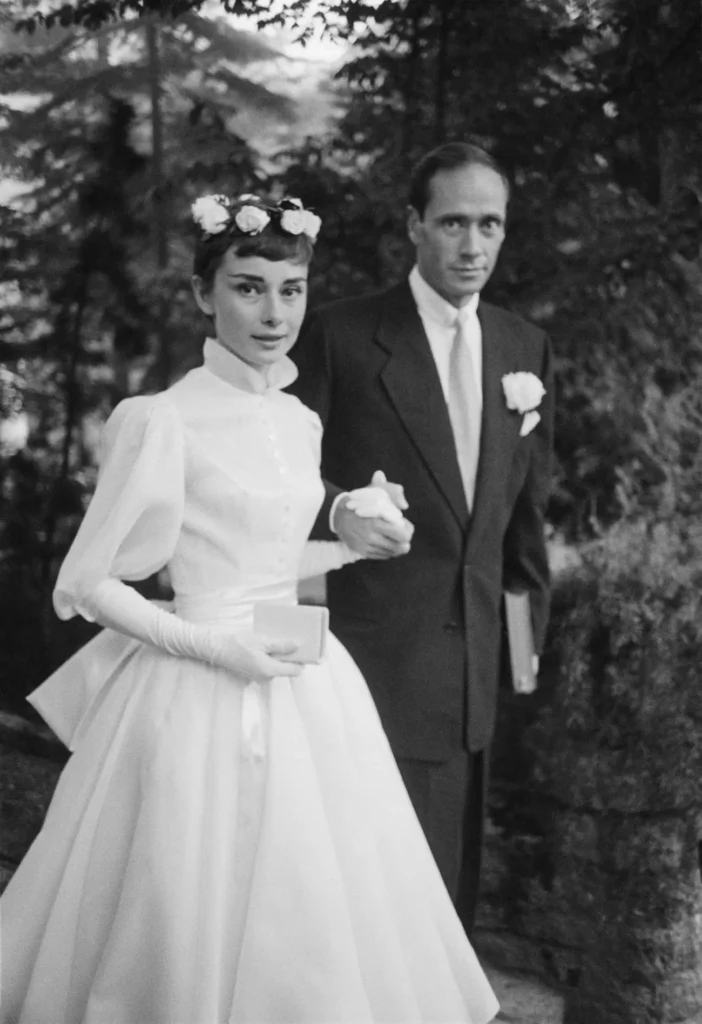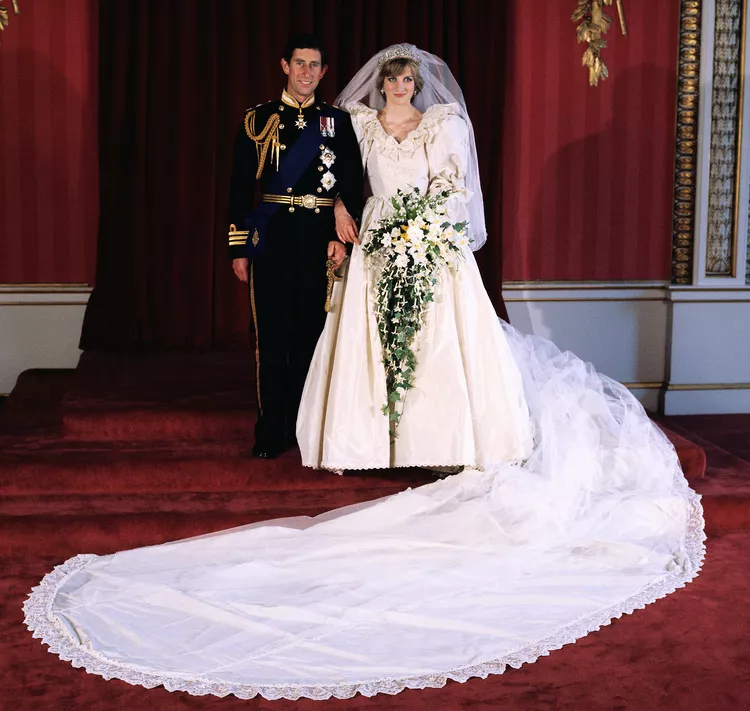The Evolution of the Wedding Industry

Today we’re going to shift gears and give a little bit of context as to how we got here. Not me personally, but the Wedding Industry. To find out more about how I got here, you can probably just ask.
I’m an open book.
The wedding industry, now a multibillion-dollar global powerhouse, is rooted in cultural traditions, media influence, and clever marketing strategies. What began as intimate celebrations of love and commitment has evolved into a sprawling ecosystem of vendors, trends, and luxury services. Here’s a look at how the industry got to where it is today.
1. The Post-War Boom and the Birth of the Modern Wedding
The foundation of today’s wedding industry was laid in the aftermath of World War II. Apparently coming close to losing everything tends to make one want to shine a light on the things we love. Returning soldiers sought stability and tradition, while the booming economy allowed for larger celebrations. Weddings became symbolic of prosperity and family values, often showcasing a couple’s social status.
The Rise of the White Wedding
While Queen Victoria popularized white wedding dresses in the 1840s, it wasn’t until the mid-20th century that the “white wedding” became a cultural staple. Hollywood films and advertising campaigns cemented the white dress, church ceremony, and lavish reception as the ultimate wedding goals. During this period, bridal attire became a symbol of purity and elegance, with companies capitalizing on this imagery to sell everything from dresses to accessories. White weddings became a standard, often tied to Christian traditions, but their influence eventually spread globally. Something about Christianity and spreading things globally. They go hand in hand.
The post-war era also introduced the concept of professional vendors for weddings. Florists, caterers, and dressmakers began specializing in weddings, creating a template for the modern industry. The growing economic prosperity of the 1950s allowed couples to spend more on their weddings, which encouraged businesses to expand their offerings.
2. Hollywood and Media Influence

Media played a pivotal role in shaping the modern wedding experience. In truth, Media plays a pivotal role in shaping everything we do. But, weddings most definitely. Hollywood films and television shows turned weddings into grand, romantic spectacles, inspiring couples to dream big.
- Hollywood’s Role: Romantic comedies and dramas frequently featured elaborate weddings that set unrealistic expectations for audiences. These depictions of lavish ceremonies encouraged couples to emulate what they saw on screen, often prioritizing aesthetics over budget considerations. Movies like Father of the Bride and later TV shows like Friends featured extravagant weddings that resonated with viewers.
- Bridal Magazines: Publications like Modern Bride and Brides emerged as trusted sources for wedding planning, offering tips, trends, and vendor recommendations. These magazines not only guided brides but also influenced the development of wedding culture by introducing must-have items, like matching bridesmaid dresses and themed decor.
- Televised Royal Weddings: Events like the 1981 wedding of Princess Diana and Prince Charles captivated millions worldwide. The grandeur and emotional resonance of these weddings set benchmarks for opulence, encouraging couples to aspire to similar levels of sophistication, even if it required significant financial investment.

3. The Wedding as a Status Symbol
The economic growth of the 1980s allowed middle-class couples to embrace more extravagant weddings. This shift transformed weddings into displays of personal achievement and social standing.
Luxury Bridal Fashion
Designers like Vera Wang redefined bridal fashion in the late 20th century, creating high-end, bespoke gowns that became the pinnacle of elegance. These dresses were often featured in magazines and on red carpets, further elevating their appeal. Bridal fashion shows and couture lines solidified the wedding dress as a major status symbol.
Destination Weddings
The growing affordability of international travel introduced destination weddings as a luxury option. From beachfront ceremonies in the Caribbean to historic castles in Europe, these weddings offered couples a unique experience while bolstering the tourism industry. Destination weddings required extensive planning and coordination, creating opportunities for specialized planners and travel agents.
4. Marketing Genius and the Wedding Industrial Complex
The wedding industry owes much of its growth to ingenious marketing campaigns that embedded new traditions into the cultural fabric.
The Diamond Engagement Ring
De Beers’ “A Diamond is Forever” campaign revolutionized the engagement ring market in the 1930s. By linking diamonds to eternal love, the company created a cultural norm where a diamond ring became synonymous with a proposal. This marketing strategy not only increased diamond sales but also established a new, lucrative segment within the wedding industry.
Gift Registries
Department stores like Macy’s and Sears introduced wedding registries, making it easier for couples to receive practical gifts while boosting retail sales. Registries became a cornerstone of wedding planning, encouraging couples to curate a wishlist of household goods, electronics, and even experiences.
Vendor Ecosystems
The rise of specialized vendors transformed weddings into multi-vendor productions. Caterers, florists, photographers, videographers, and DJs became essential players in wedding planning. The introduction of wedding planners further streamlined the process, allowing couples to delegate responsibilities and focus on their vision.
5. Social Media’s Role in Wedding Evolution
Social media platforms have profoundly reshaped the wedding industry, particularly for Millennials and Gen Z couples.
- Pinterest & Instagram: These platforms made wedding planning a highly visual and collaborative experience. Couples could create mood boards, save inspiration, and access countless ideas for decor, attire, and themes. Instagram hashtags like #WeddingGoals further fueled aspirations for picture-perfect ceremonies.
- Personalization Boom: Social media encouraged individuality, leading to a surge in personalized weddings. From custom hashtags to unique themes, couples sought to make their weddings stand out, often prioritizing originality over tradition.
- Influencer Marketing: Wedding influencers and bloggers showcased luxury trends, creating demand for high-end products and services. Sponsored content and partnerships with brands further blurred the line between inspiration and advertisement, driving industry growth.
6. Globalization of Traditions
The interconnectedness of the modern world has given rise to multicultural and destination weddings, adding complexity and opportunity to the industry.
Multicultural Celebrations
Couples from diverse backgrounds began blending traditions, creating ceremonies that honored multiple cultures. This trend required vendors to adapt, offering culturally specific services such as traditional attire, cuisine, and rituals. These celebrations often involved multiple events, increasing their scale and cost.
Destination Markets
Destination weddings became a lucrative niche for the industry. Planners such as Amanda with AMV Weddings focus almost solely on these destination weddings. Regions like Tuscany, the Maldives, and Bali capitalized on their appeal as wedding hotspots, offering all-inclusive packages that catered to international couples. The rise of luxury resorts and bespoke planning services ensured these weddings were both memorable and profitable.
7. The Modern Economic Engine of Weddings
Financial Power of Weddings
The U.S. wedding industry alone generates approximately $57 billion annually, with global figures significantly higher. The average cost of a wedding in the U.S. is around $30,000, with venues, catering, fashion, and photography accounting for the largest expenses.
Technology’s Role
Digital tools have made wedding planning more accessible. Online platforms like The Knot and Zola allow couples to manage budgets, create timelines, and connect with vendors. Even further than this, the main source for getting a photographer/videographer has been through Instagram for over a decade now.
Virtual components, such as live-streamed ceremonies and digital invitations, gained traction during the COVID-19 pandemic, diversifying revenue streams and making weddings more flexible.
Conclusion: The Wedding Industry Today
From post-war celebrations to Instagram-worthy extravaganzas, the wedding industry has mirrored societal changes in consumerism, media influence, and cultural expression. Its continued evolution ensures that it will remain a significant economic and cultural force for generations to come. What started as intimate gatherings now drives a global market, showcasing the enduring power of love and the creativity of human enterprise.
As the wedding industry continues to evolve, standing out has never been more important. At Custom House Creatives, we specialize in SEO and marketing strategies tailored for wedding professionals. Whether you’re looking to attract your ideal clients, grow your online presence, or showcase your unique services, our team is here to help you shine. Let’s work together to make your business unforgettable—contact Custom House Creatives today!
Published Photographer Spills the Tea
How a Luxury Videographer Expanded
Florist Shares How She Grew her 7 Figure Business
Behind the Scenes from a Luxury Styled Shoot
CATEGORY
Secrets of the Industry from lead Wedding Planner
Category